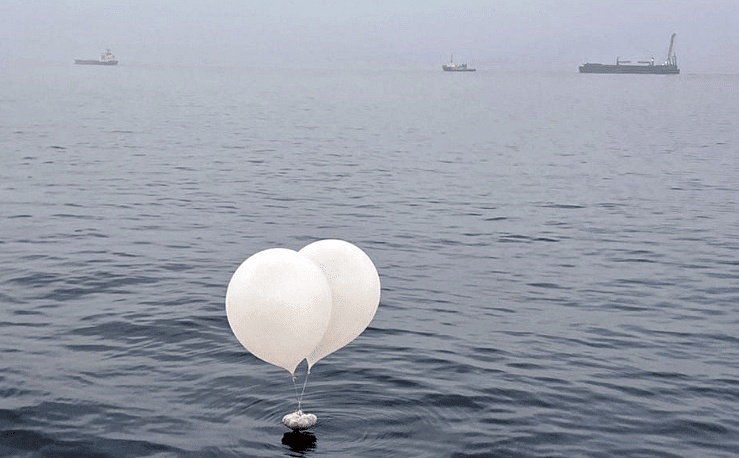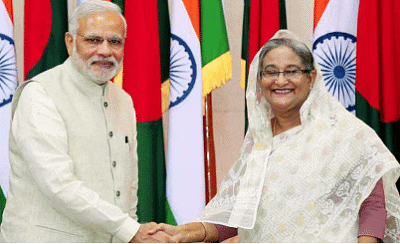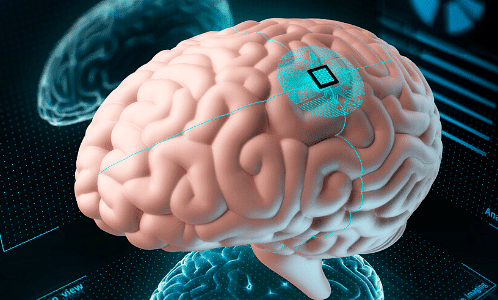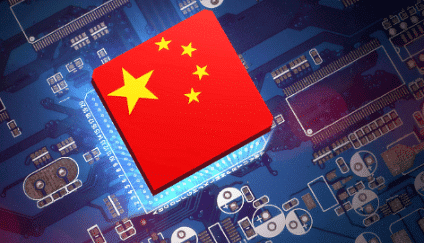CUET Commerce Exam > CUET Commerce Notes > General Test Preparation for CUET UG > Weekly Current Affairs (1st to 7th July 2024)
Weekly Current Affairs (1st to 7th July 2024) | General Test Preparation for CUET UG - CUET Commerce PDF Download
Korea Balloon War

- Overview: South Korean activists initiated the "balloon war" in May 2024 by sending propaganda materials into North Korea using balloons. This action triggered a series of events between the two countries.
- Escalation:
- In May 2024, South Korean activists began the conflict by sending propaganda over North Korean territory using balloons.
- By the end of May 2024, North Korea responded by sending approximately 250 balloons filled with trash into South Korea, marking the beginning of a back-and-forth exchange of balloon-launched items.
- Early in June 2024, North Korea escalated the conflict by sending another wave of balloons filled with trash. In response, South Korea started broadcasting news and K-pop songs near the border using loudspeakers.
- In mid-June 2024, tensions heightened when Kim Yo-jong, sister of North Korean leader Kim Jong-un, publicly criticized South Korea's actions, potentially worsening the situation.
- Historical Background:
- After World War II in 1945, the Korean Peninsula was divided into North Korea and South Korea, leading to the Korean War from 1950 to 1953. Despite an armistice, formal peace was not established, leaving the two Koreas technically at war. Subsequent years saw varying levels of conflict and diplomacy on the peninsula, complicated by North Korea's nuclear ambitions.
- Use of Balloons in Psychological Warfare:
- In the Korean War, leaflets were dropped from balloons to persuade North Korean and Chinese soldiers to desert the military.
- Post-Cold War era saw the US and South Korea sending anti-communist propaganda via balloons into North Korea.
- Technological Advancements in Balloon Warfare:
- "Smart balloons" represent modern progress, equipped with technology enabling the dissemination of messages deep into North Korea. These balloons can carry handouts and pre-recorded messages to bypass North Korea's information censorship.
- Legal and Social Implications:
- In 2020, the South Korean government initially prohibited balloon launches due to security concerns. However, a court later overturned the ban, citing the right to free speech. The practice remains contentious, with some South Koreans apprehensive about potential retaliation from the North and questioning the effectiveness and safety of such endeavors.
Indian Navy in RIMPAC 2024
- Overview: The Indian Navy participated in the Rim of the Pacific Exercise (RIMPAC) 2024, the world's largest naval exercise held in Hawaii involving troops from various nations.
- INS Shivalik: India deployed the INS Shivalik, a technologically advanced stealth frigate, showcasing the Indian Navy's capabilities. The frigate covered a significant distance to join the exercise.
- Phases of RIMPAC 2024:
- Commencement: RIMPAC 2024 started with a harbor phase from June 27 to July 7, followed by meticulously planned sea and subsequent smaller phases involving complex maritime activities.
- Activities: Various naval forces engaged in activities like aircraft carrier operations, submarine maneuvers, and amphibious force landing operations during the exercise.
- Objective and Significance:
- Goals: RIMPAC 2024 aims to enhance international cooperation and interoperability among allied forces while improving maritime operation skills for maintaining peace in the Indo-Pacific region.
- Theme: This year's theme, "Partners: Integrated and Prepared," underscores the importance of collaboration and readiness in maritime operations.
- About RIMPAC:
- Origin and Scale: The Rim of the Pacific Exercise is the world's largest maritime warfare exercise initiated in 1971, led by the U.S. Navy's Pacific Fleet, and held biennially around Hawaii and Southern California.
- International Participation: RIMPAC involves participants from 26 countries, including non-NATO members like China and India, fostering international maritime relations and stability.
- Activities: The exercise covers a range of activities such as gunnery, missile, anti-submarine, and air defense exercises, alongside humanitarian and counter-piracy operations, and features a live innovation fair for testing new technologies.
India and Bangladesh Forge Defense Industrial Partnership Deal

- Recent Developments: Bangladesh Prime Minister Sheikh Hasina's visit to India in June significantly enhanced military cooperation between the two countries.
- Procurement of Oceangoing Tug: The Bangladesh Navy's acquisition of an 800-ton oceangoing tug, manufactured by Garden Reach Shipbuilding & Engineers Ltd (GRSE) in India, underscores the deepening defense ties. India is financing this purchase through a credit line, coinciding with Admiral Dinesh K Tripathi's visit to Bangladesh as India's Chief of Naval Staff.
- Vessel Capabilities: The oceangoing tug is adept at towing ships, assisting in berthing and casting off operations, and undertaking rescue and salvage missions. It can maneuver effectively in challenging conditions, offering advanced maritime capabilities like firefighting and pollution control.
- Extensive Defense Collaboration: The agreement follows GRSE's commitment to supply a Trailing Suction Hopper (TSH) dredger to Bangladesh, highlighting the increasing trend of collaborative defense initiatives. Various agreements signed during PM Hasina's visit, encompassing space, telecommunications, maritime security, and the ocean economy, underscore the growing strategic partnership between the two nations. Notably, Prime Minister Narendra Modi's endorsement of Bangladesh's participation in the Indo-Pacific Oceans Initiative signifies the significance of these agreements.
- Strengthening Bilateral Ties: The defense partnership between India and Bangladesh, initiated with a bilateral defense agreement in 2017, has witnessed substantial growth. Joint military exercises such as "Sampriti" focusing on counterterrorism and disaster management exemplify the collaborative efforts. Coordinated maritime patrols between the Indian Navy and the Bangladesh Navy aim to enhance safety and trust along their shared sea border. Additionally, their participation in the trilateral naval exercise "IN-BN-THAI CORPAT" with Thailand aims to bolster maritime cooperation in the region.
- Economic and Strategic Assistance: India's provision of a $500 million Line of Credit to Bangladesh in 2019 for military equipment purchases underscores its economic and strategic support. These initiatives form part of a comprehensive framework aimed at fostering stability and security in the region.
What is SEBEX 2, Most Powerful Non-Nuclear Explosive Developed by Indian Navy?
- SEBEX 2, a groundbreaking bomb developed by the Indian Navy in collaboration with Solar Industries, is 2.01 times more powerful than TNT.
- This creation marks a significant advancement under India's Defense Export Promotion Scheme.
Advantages of SEBEX 2
- SEBEX 2 is crafted from High-Melting Explosives (HMX), enhancing the destructive potential of various weapons such as bombs, gun shells, and warheads without adding extra weight.
- It stands out as one of the most potent non-nuclear explosives globally.
Comparative Lethality
- Previously, India's strongest conventional explosive, primarily used in BrahMos weapons, was around 1.50 times as potent as TNT.
- Most international weapons have TNT equivalences between 1.25 and 1.30, demonstrating the superior effectiveness of SEBEX 2.
Other Significant Developments
- Economic Explosives Limited (EEL) is developing an explosive with 2.3 times the power of TNT, slated for completion in six months.
- The Indian Navy has sanctioned SITBEX 1, the first thermobaric explosive, ideal for assaulting well-protected enemy zones due to its prolonged blast duration and intense heat production.
- SIMEX 4 has received approval, ensuring safer handling and storage, especially crucial for sensitive applications like submarine torpedo weapons.
About the Indian Navy
- Historical Evolution and Key Milestones: Originally established in 1612 as the East India Company's Marine, the Indian Navy played a pivotal role during WWII and fully transitioned into a Republic force in 1950.
- Training and Diverse Operations: The Indian Naval Academy, the largest in Asia, plays a crucial role in naval training. Notable operations include an all-woman crew circumnavigating the globe aboard the INSV Tarini in 2018.
- Submarine Arm and Advanced Capabilities: Launched in 1967, the Indian Navy's submarine arm significantly enhances its operational capabilities in sea, land, and air domains, emphasizing the importance of a robust marine force.
World's First Brain Implant for Epilepsy Control

- Oran Knowlson, a teenager from the United Kingdom, has become the first person globally to receive a brain implant for controlling epileptic seizures. The implant, known as deep brain stimulation (DBS), has significantly reduced his seizures by 80%.
Understanding Epilepsy and Its Challenges
- Epilepsy leads to seizures, which are sudden bursts of electricity in the brain causing muscle jerks, confusion, blank stares, or loss of consciousness. The causes of epilepsy are often unknown, but factors like head injuries, brain tumors, and genetics can increase its likelihood. Standard treatment involves anti-seizure drugs, but around 30% of patients do not respond to them.
What is Deep Brain Stimulation (DBS)?
- Deep brain stimulation (DBS) involves implanting an electrical stimulator in the brain to target specific areas. While commonly used for movement disorders like Parkinson's, DBS is also explored for seizure treatment. The device is typically placed under the skin in the chest, with wires connecting to the brain to regulate abnormal brain activities.
Innovation in Treatment: DBS Directly in the Brain
- Surgeons broke new ground by implanting a DBS device directly into Oran Knowlson's brain, reaching the thalamus, a crucial brain region for sensory and movement signals. This direct brain implantation aims to enhance seizure reduction effectiveness.
Procedure and Recovery
- During surgery, two electrodes were inserted deep into the brain and connected to a neurostimulator placed in the skull. The device was activated once Knowlson recovered, leading to immediate improvement in seizure control. Notably, the device can be electrically charged for easier maintenance by the patient.
Economic Considerations of DBS
- Deep brain stimulation (DBS) offers benefits but is a costly procedure. According to Dr. Manjari Tripathi from AIIMS, New Delhi, the neurostimulator alone costs about 12 lakh rupees, with total expenses reaching 17 lakh rupees including surgery. In contrast, traditional brain surgery costs between Rs 20,000 and Rs 30,000, making cost a significant factor in treatment selection.
Bharat Bill Payment System
- From July 1, all credit card payments via third-party apps must go through BBPS as per RBI.
- Users with credit cards from major Indian banks can't use platforms like CRED or Paytm without BBPS integration.
Definition of BBPS
- Operated by NPCI to expedite payments for companies and customers.
- Supports various payment methods, both physical and digital, facilitating easy transactions.
Significance in Recent RBI Policies
- BBPS aims to enhance consistency and security in credit card payments.
- Redirecting third-party app payments through BBPS enhances regulation and security.
Current Integration Status
- 12 major Indian banks like SBI, ICICI, and Kotak are active BBPS members.
- HDFC Bank and Axis Bank are working on linking their systems to BBPS.
Challenges in Integration
- Some banks hesitate due to significant investments required for system changes.
- Transitioning to BBPS demands resources and altering internal banking operations.
China Leads Global GenAI Patents: U.N. Data

China Leads in Generative AI Patents
- China is ahead in creating AI technology by patenting much faster than other countries, with six times more patents filed than the US.
Understanding Generative AI
- Generative AI refers to advanced algorithms that learn from existing data to create new content like text, images, music, and code.
China's Dominance in Patent Filings
- Between 2014 and 2023, China filed over 38,000 Generative AI patents, surpassing the US with 6,276 filings. Various fields like self-driving cars, printing, and document management are covered.
Global Impact and Key Players
- Following China and the US, South Korea, Japan, and India are notable contributors. India shows significant growth. Companies like ByteDance and Alibaba from China and Microsoft through its collaboration with OpenAI are key players.
Implications and Future Trends
- Generative AI enhances customer service with chatbots and is poised to revolutionize sectors such as science, writing, and transportation. The potential for scientific advancements, like accelerating drug development using AI-generated molecules, is remarkable. WIPO forecasts a surge in patent applications and plans to use Generative AI for future data analysis to highlight trends.
ADB Solar Power Plant in Gujarat
Project Overview
- Asian Development Bank (ADB) is supporting the ENGIE group with a loan of Rs 1,460 crore to build a 400 MW solar power plant in Surendranagar, Gujarat.
Financial Support
- The financing involves a Rs 14.6 billion loan, with contributions from ADB and Asian Infrastructure Investment Bank (AIIB), each providing Rs 7.3 billion.
Environmental Impact
- The solar plant will help India in its goal to achieve 500 gigawatts of non-fossil fuel energy by 2030. It will also reduce carbon dioxide emissions by 662,441 tonnes annually over its 25-year lifespan.
Technological Innovation
- The plant will utilize bifacial photovoltaic power modules from the United States, supporting the domestic solar module industry and expanding the supply chain.
Partnership and Sustainability
- This project represents the ongoing collaboration between ENGIE and ADB, demonstrating a commitment to green energy and sustainable practices for a stable economic future.
Radical CAR-T Therapy
What is Radical CAR-T Therapy?
- Radical CAR-T Therapy, also known as chimeric antigen receptor T-cell therapy, is an innovative approach to treating cancer. Recently, the US FDA investigated potential risks, finding 33 cases of secondary cancers in 30,000 patients treated with CAR-T therapy by March 2024, leading to boxed warnings for all treatments.
Understanding CAR-T Therapy
- CAR-T therapy involves modifying a patient's T-cells in a lab to enhance their ability to combat cancer cells before reintroducing them into the patient's body. It has shown significant success, particularly in treating challenging cancers like lymphomas and multiple myeloma.
Potential Causes of Secondary Cancers
- Genetic alterations during CAR-T therapy could potentially trigger secondary cancers. The use of retroviruses in the process may induce "insertional mutagenesis," altering normal gene function and possibly leading to cancer. However, the direct link between CAR-T therapy and new cancer cases remains uncertain.
Relative Risks and Benefits
- While there is a slight risk of developing a second cancer, it is infrequent. The benefits of CAR-T therapy, particularly for advanced cancer patients, outweigh the risks significantly. The therapy is expanding its applications to treat autoimmune diseases and prevent organ rejection.
Ongoing Research and Future Directions
- Continued research aims to enhance the safety of the viral vectors used in CAR-T therapy and explore their potential in treating other severe illnesses. Healthcare providers are committed to informing patients about the rare risks associated with CAR-T therapy to empower them in making informed treatment decisions.
About CAR-T Therapy
- CAR-T therapy, a groundbreaking treatment, genetically engineers patients' T-cells to target cancer cells. FDA-approved in 2017, it is primarily used against certain types of leukemia and lymphomas. This "living drug" approach modifies T-cells externally to combat cancer cells.
- Despite its efficacy, CAR-T treatment can trigger neurotoxicity and cytokine release syndrome. Research continues to make it safer and more cost-effective for broader applications, including large tumor treatments.
Robot Suicide Incident

What is 'Robot Suicide'?
- In late 2023, a robotic government servant named "Robot Supervisor" at Gumi City Council was found broken at the bottom of a flight of stairs, leading to what is now termed "robot suicide." The robot, with a civil service ID and a 9-to-5 routine, was an integral part of the council staff.
Role and Functions of the Robot
- 'Robot Supervisor' was not just a machine; it was a key part of Gumi City Council with its own ID card. It operated from 9 AM to 5 PM, could navigate different floors, use elevators, and assist with tasks like document delivery and city promotion, showcasing its advanced capabilities akin to a human colleague.
Possible Causes and Investigation
- Prior to its discovery, the robot was observed repeatedly moving in a specific area, indicating potential issues or distress. The exact reason behind its fall downstairs is under investigation. Some speculate that the demanding tasks and operational load might have led to a malfunction, termed metaphorically as "robot suicide." The manufacturer, Bear Robotics, is involved in the analysis.
Impact on Future Robot Deployment
- Following the incident, Gumi City Council postponed plans for adding another robot to their workforce, highlighting the caution in integrating robots into public service roles to ensure safety and reliability. South Korea's gradual adoption of robots across various sectors underscores the need for deep contemplation on the ethical, scientific, safety implications of substituting human jobs with robots, emphasizing the importance of regulations and oversight in this evolving field.
Telecom Act 2023
- New parts of the Telecommunications Act were recently revealed by the UK government to simplify processes for managing the telecommunications space.
- Important sections like 6-8, 48, and 59(b) of the Act became effective today, aligning with previous updates since June 26.
Understanding the Telecommunications Act
- The Telecommunications Act replaces the Indian Telegraph Act of 1885 and the Indian Wireless Telegraph Act of 1933, adapting to technological advancements.
- Its main goal is to establish a legal system for managing the telecommunications spectrum.
Spectrum Utilisation and Management
- Newly publicized parts of the Act focus on optimizing telecommunications spectrum usage through actions like sharing, selling, and leasing.
- The Act supports a technology-neutral approach, ensuring flexibility to adapt to new technologies.
Regulatory Changes and Appointments
- Section 59(b) amends the selection process for the Chairperson and members of TRAI, emphasizing high standards for telecom industry governance.
Impact and Enforcement
- The Act empowers the Central Government to enforce regulations and prevent the use of communication equipment that disrupts services without authorization.
- These measures aim to maintain the security and efficiency of telecom services.
About Telecom Regulatory Authority of India (TRAI)
- Established in 1997, TRAI oversees the telecommunications sector in India, ensuring compliance, fostering competition, and promoting efficient services.
- TRAI introduced the National Do Not Call Registry in 2007 and the Telecom Commercial Communications Customer Preference Regulations in 2018 to combat unwanted calls.
- TRAI monitors service quality for cable and television services and offers the "MySpeed" app for users to report internet speeds to the government.
The document Weekly Current Affairs (1st to 7th July 2024) | General Test Preparation for CUET UG - CUET Commerce is a part of the CUET Commerce Course General Test Preparation for CUET UG.
All you need of CUET Commerce at this link: CUET Commerce
|
164 videos|626 docs|1128 tests
|
Related Searches
















